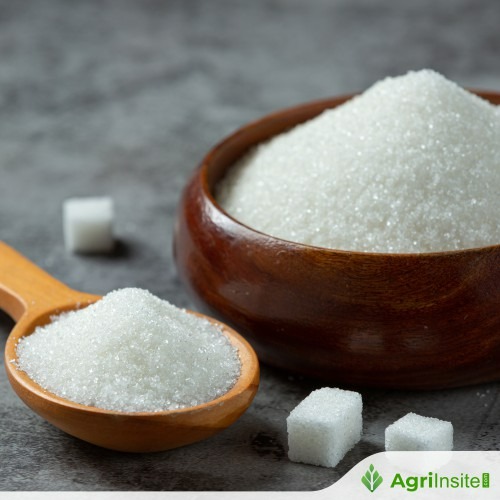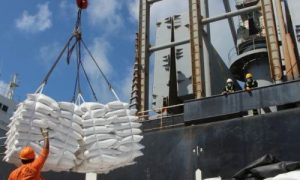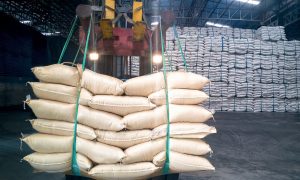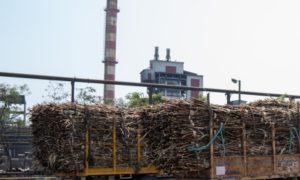South Africa : Finding the sweet spot for the sugar industry is key to growth, say experts

South Africa’s sugar industry faces surging imports, weak tariff protection and a US tariff hike of 30%, threatening over R100 million in revenue. At SASTA’s annual congress, leaders stressed shifting from sugar to broader sugarcane-based products—bioplastics, renewable energy and co-generation—to secure sustainability under the 2030 Sugarcane Value Chain Master Plan.
The South African sugar industry is grappling with short-term pressures from surging imports and weak tariff protection and needs to prioritise diversifying its revenue streams and embracing sustainability to secure its future.
This is the message from industry leaders on the opening day of the 97th annual congress of the South African Sugar Technologists’ Association (Sasta) in Durban on Tuesday.
The opening session of the three-day event was attended by about 700 delegates from the industry who exchanged and transferred knowledge on the day’s theme, sustainability.
Speaking to TimesLIVE on the sidelines of the congress, Sasta president Dr Muhammad Kadwa said the sugar industry had endured many challenges over the years, including the introduction in 2018 of the Health Promotion Levy, or the sugar tax, which has cost the industry more than R1bn in lost revenue.
However, the biggest challenges centre on low export prices and a large influx of sugar imports into the local market.
“Unlike other commodities, sugar has a better market in terms of pricing domestically than in the export market, so any sugar that is imported affects revenue for our farmers, large or small scale, factories, the milling industry, the entire value chain,” he said.
The crisis facing the industry is further exposed by the reciprocal tariff rate of 30% imposed on the country by the US. The tariff came into effect at the beginning of this month.
Those tariffs are added to the sugar industry that already has a limited quota access to the US market, currently capped at just about 24,000 tonnes, in a deal that is not covered by the African Growth and Opportunity Act trade agreement.
Rex Talmage, deputy chairperson of South African Sugar Association (Sasa), believes the US tariffs are not as crippling to the industry as local challenges.
“South Africa has had, for a number of years, a quota in terms of exports to the US and that [the tariff hike] will become uneconomical. It won’t be feasible, but it’s not as damaging and crippling as the imports of sugar that are flooding into South Africa, that’s a far bigger challenge. We lose more from that.”
Despite the restricted access, Kadwa said he hopes the tariff is scrapped or reduced, as the US still represents a large market in terms of revenue for the industry. That is because, despite the current low sugar prices in the world because of surplus production, the US is not producing enough, meaning they need to import.
“It’s only about 6% of our exports that go into America, but what is very impressive is that America is a premium-priced market, so we do generate significant revenue from it. The US is a deficit producer of sugar so they need to import it, but the world now has surplus production so they can choose where they source it from.”
He said the marked up tariff puts the already-struggling local industry at a further disadvantage in one of the few fertile markets, resulting in millions of rand in lost revenue.
“For South Africa to still access that market the customers are saying they are not willing to pay the additional 30%, so we would need to discount our sugar. We will have to basically get about 70% of the revenue in that market if we still want to supply, which erodes our premium price significantly and negatively affects us,” he said.
“Roughly speaking this year, based on the current exchange rate and world prices, if we need to discount our sugar we’re talking more than R100m worth of revenue that we would be losing because of the 30% tariff to America, which is a significant loss for the industry.”
He said the US was still a higher-priced market compared with other export markets even with the 30% tariff in place, because of their need for sugar, but he warned that things may change any time.
“That doesn’t mean it will stay like that forever. If we were to have a world production shortage next year, for example, then there could be other markets we would have to look at if the 30% stays. In terms of revenue, the US has been a very attractive market for us for many years, but that can definitely change if the 30% becomes permanent.”
Talmage said the challenges the industry has faced over the years have built resilience and showed producers the need for even stronger collaboration as a sector.
“We’ve learnt to adapt and we’ve coined the phrase ‘calm heads and clear thinking in times of crisis’, so we’re focused on solutions and collaboration to achieve stability and solutions to the challenges we face.”
NO SUGAR COATING Keynote speaker Liesel Kassier, SASA vice-chairperson Rex Talmage, Sasta vice-president Sandy Snyman, Sasta congress organising committee chairperson Dr Sumita Ramgareeb and Sasta president Dr Muhammad Kadwa.
Delivering the keynote address, Liesel Kassier, Metair academic head of sustainable manufacturing at the Toyota Wessels Institute for Manufacturing Studies, said the sugar industry needs to acknowledge it is facing a “product crisis” and start repositioning itself.
She said it will likely face more taxes, and lobbying for more protection or against the sugar tax was a futile exercise in today’s world.
“The sugar taxes are not going to go away because globally there is an increase of awareness around the consumption of sugar and that it’s bad for health. So they’re facing a consumer crisis around the product, so rather than just zoning in on the sugar tax they need to realise that’s just one revenue stream for them.”
She proposed that the industry looks at “flexing the crop” by supplying byproducts of sugarcane to other industries.
“Sugar sits on a valuable resource and they can derive many different products from the actual sugarcane stick which can be used as inputs into the new economy. As manufacturing and other economic sectors need to do things differently to become more sustainable, they can look into sugar as a resource provider. Things like bioplastics, new forms of packaging, provision of co-generation and renewable energy. These are things that sugar [producers] have at their disposal.”
Diversifying revenue streams is part of the Sugarcane Value Chain Master Plan to 2030, a strategic plan the industry developed in 2020 to bring stakeholders in the value chain together.
“We’re working towards a reimagined sugar industry where we’re moving from sugar to sugarcane-based. We want to diversify the industry by collaborating with everybody in the value chain,” said Talmage.
“A multifaceted set of solutions are needed and we need to navigate them all together, but having an economy that relies on a single product is not resilient and we need to diversify. The trick is to find the product that is the most feasible to pursue.
“We want to make the industry sustainable, resilient and nimble into the future and we want to realise the full value of the sugarcane stock while not leaving anybody behind.”
To Read more about Sugar Industry continue reading Agriinsite.com
Source : Times Live














